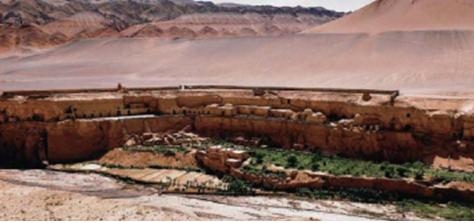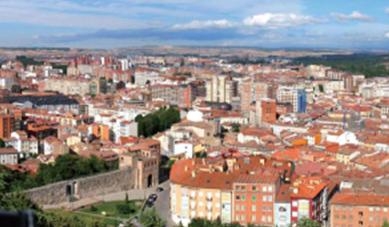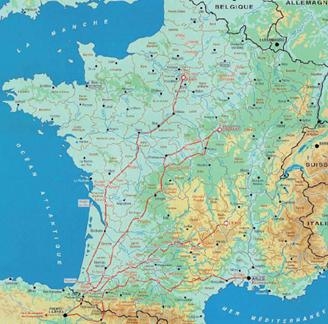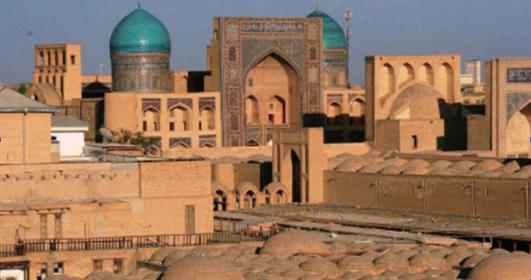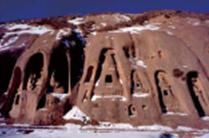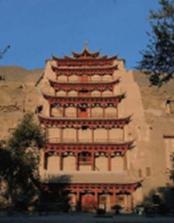| Three Key Concepts to Understand Cultural Routes |
| Author:Wang Jianbo PublishDate:2013-02-28 Hits:8530 |
Since the adoption of The ICOMOS Charter on Cultural Routes at its 16th General Assembly and Scientific Symposium in Quebec (Canada) in Octobcr 2008, Cultural Routes, as a category of cultural property, has been clearly defined in terms of its basic principles and methodologies. But still, the concept is subject to clarification and further explanation in the following aspects:
1. Cultural Route vs. Transport Line The two concepts interconnect each other in the following four respects:
a. A cultural route, most of all, must either be a transport line of a certain type or a transport network. Transport lines, as corridor that enable migration and communication of mankind, present the way how each part of a cultural route was connected, and serve as tangible elements that bear witness to its cultural heritage and provide a physical confirmation of its existence. A linear cultural property without functions of transportation, like the Great Wall, shall not be defined as cultural routes; neither shall be those heavily relying on the scientific and technological development of priming and electronics to fulfill inter-cultural influences and connections while having little to do with material spaces;
b. Only when a transport line was being used for a specific and well-determined purpose, can it be inscribed as cultural routes. This specific and well-determined purpose, by which cultures of different groups were driven to flow and exchange, differentiates this transport line from other ones, presenting its fundamental character and outstanding value as a cultural route. Most of the internationally recognized cultural routes are named after their functions and purposes, such as the Routes of Santiago de Compostela, the Silk Road, the Grand Canal, the Frankincense Trail, the Tea Road, etc.;
c. Only when mutual communications and influences were established among the different cultural groups along the transport line, can it be labeled as “cultural routes”. This is also where the significance of cultural routes as a world heritage lies. Therefore, the above transport line must be long enough to span different cultural areas geographically in a relative long period of time in the history, so as to enable the multi-dimensional exchanges among different cultural groups to occur. The subsequent outcomes and carriers left by the communication and influences are hence important constitutions of cultural routes;
d. Cultural routes, be it a transport line b water or by land, is closely related to the spatial structures based on which a transport line performs its function as a two-way passage. In normal conditions, cultural groups always flow from one end (the beginning) of the route to the other (the terminal).It is noted that cultural exchanges rarely happen on or about the start of the line, but a few properties with specific purposes. Heritages with a reflection of relevant communication and interactive phenomenon mainly appear on the middle and the terminal part of the route;
2. About its "dynamic" character
The dynamic factor of Cultural Routes in essence refers to its character as a generative power-the driving force that pushes cultural exchange along transport lines rather its process in progress or evolving. Cultural routes have their own “specific dynamic”, which enables them to “act as a conductor or channel trough which the reciprocal cultural influences have flowed”, namely the specific goals cultural routes accomplished.
3. Intangible Heritage in cultural routes
The intangible elements in cultural routes are the ones with tangible forms. Serving to give sense and meaning o the various elements that complement the material aspects, they are virtually tangible elements in a different form. The intangible elements together with their tangible forms mainly include: physical carriers of old traditions and customers like languages, diets and dresses; spaces for religious and festivals rituals; carries where art forms like music literature and painting materialized; traditional farming and handcraft techniques, and industrial technologies; and intangible elements like architectural styles and forms, and structural features of cities and towns, etc. The intangible elements of cultural routes cover almost every special and architectural form in human accumulation areas. Together with transport lines and its functional properties, the historic towns and cities constitutes the most important context to explain the inter-personal communications and dialogues along cultural routes.
The Routes of Santiago de Compostela
The Routes of Santiago de Compostela (“the Route”), as a religious pilgrimage route, is the first cultural route in the world. The sections in Spain and France were respectively inscribed into World Heritage List in 1993and 1998.The Spanish section of the Route passes through 5 autonomous regions and 166cituies, towns and villages. Some 1,800 historic buildings along the route built since the 11th century, are successively included into the world Heritage List, covering a range of architectural types: buildings serving religious purposes like cathedrals, parish churches, chapels and monasteries, infrastructures like hospitals, hostels and inns that were financed by local church, administrative buildings, mansions and palaces in the urban and rural areas, as well as other structures like bridges, border passes and crosses with monumental significance.
Judging by their criteria of identifications and their contents, these heritages actually involves every facet of cultural routes; the entire transport line itself, heritages with transportation functions like hospitals, fountains, hotels and station, heritages for religious and commercial purposes and their derived structures, an those outstandingly evident to the cultural exchange and dialogues in history. The conservation area usually covers a whole urban and rural region, such as Pamplona. Because the context o the city and town is of importance to the understanding of cultural routes, some landscapes like hills, plains and fields around them are also concluded into protection zones, like what happened in Monreal.
69 cultural properties along the French section of the Route, selected from a pool of 800 pilgrimage heritages nominated by the state, were listed as UNESCO World Heritage Site. The relevant criterion States that the Heritage: admirably illustrates the carefully selected monuments on the routes followed by pilgrims in France; bears exceptional witness to the power and influence of Christian faith among people of al classes and countries in Europe during the Middle Ages; the spiritual and physical needs of pilgrims travelling to Santiago de Compostela were met by the development of a number of specialized types of edifice, such as for praying (churches and monasteries), rest and nursing (hotels and hospitals), and travelling (passes and bridges).
|
- Call for Application | 2024 Global Awards for World Heritage Education Innovative Cases(AWHEIC) Promoting what people do and how they do it
- Documentary: 2023 World Heritage Creative X Innovators Conference and the AWHEIC Third Anniversary Celebration
- Publication | WHITRAP Newsletter No. 61
- Mt. Huangshan first show in Climate Action for World Heritage
- Call for Good Practices: 2024 Environment and Resilience
- FAQs | 2024 Call for Good Practices
Copyright © 2009-2012 World Heritage Institute of Training and Research-Asia and Pacific (shanghai)


